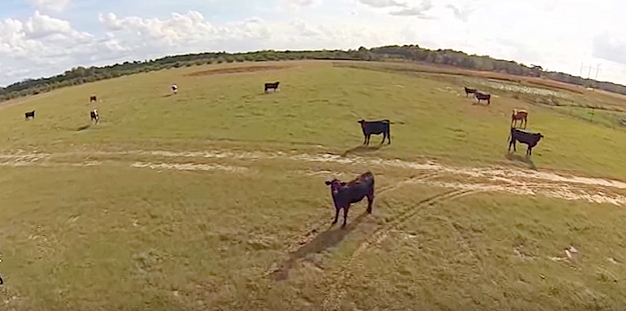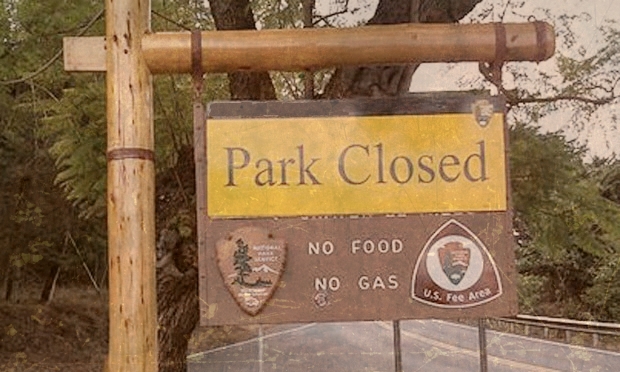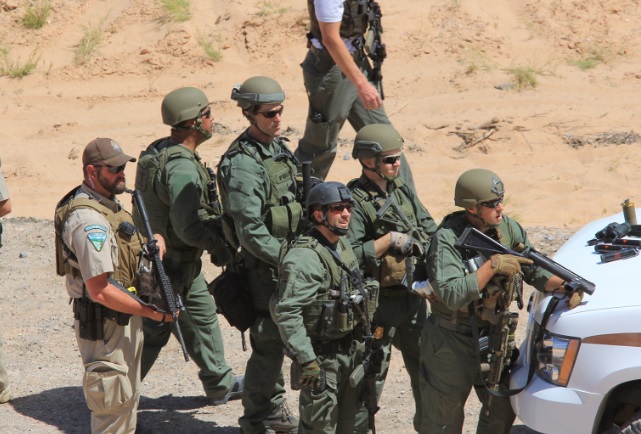…some youths were using vehicles to frighten and chase down baby cows. According to Chew, “The kids were laughing while chasing the calves and running them over, and they put videos of it on the Internet.” Chew said that the owner of the livestock contacted the local Sheriff about the incident, and although he made some arrests in the case, there was no guidance in the law about how to prosecute these particular offenses.
by Marjorie Haun
According to its primary sponsor, Representative Scott Chew (R D-55), Utah House Bill 217 (HB 217) is the first bill of its kind in the United States to criminalize harassment of livestock using drones or other means. HB 217 passed the Utah House on Monday, February 27, and is now on its way to the Senate.
The introduction to HB 217 reads:
General Description:
9 This bill prohibits the harassment of livestock.
10 Highlighted Provisions:
11 This bill:
12 ▸ prohibits a person from intentionally, knowingly, or recklessly chasing, actively
13 disturbing, or harming livestock through the use of:
14 • a motorized vehicle or all-terrain vehicle;
15 • a dog; or
16 • an unmanned aircraft system; and
17 ▸ describes the penalties for violating the prohibition on harassment of livestock.
The bill provides a broad definition of livestock harassment, and includes the various mechanisms that have or can be used, including dogs. In a conversation with Representative Scott Chew, Free Range Report was made aware of just how extensive livestock harassment and resulting destruction are, and of how many such instances have been purposely recorded and posted on social media and YouTube. Representative Chew said, “During the discovery phase of preparing this bill, we were amazed by how much stuff is on YouTube of people chasing down livestock.”
Representative Chew, who is himself a rancher from a rural district in northeastern Utah, indicated that his first motivation for the bill was an incident which took place on a ranch in the Uintah Mountains. He told Free Range Report that some youths were using vehicles to frighten and chase down baby cows. According to Chew, “The kids were laughing while chasing the calves and running them over, and they put videos of it on the Internet.” Chew said that the owner of the livestock contacted the local Sheriff about the incident, and although he made some arrests in the case, there was no guidance in the law about how to prosecute these particular offenses.
Now, HB 217 bill gives clear guidance on who can be prosecuted for harassment of livestock, and what penalties may be applied:
26 Be it enacted by the Legislature of the state of Utah:
27 Section 1. Section 76-9-308 is enacted to read:
28 76-9-308. Harassment of livestock.
29 (1) As used in this section:
30 (a) “Livestock” has the same meaning as that term is defined in Subsection
31 76-9-301(1).
32 (b) “Unmanned aircraft system” has the same meaning as that term is defined in
33 Subsection 63G-18-102(5)(a).
34 (2) Except as provided in Subsection (3), a person is guilty of harassment of livestock
35 if the person intentionally, knowingly, or recklessly chases, actively disturbs, or harms
36 livestock through the use of:
37 (a) a motorized vehicle or all-terrain vehicle;
38 (b) a dog; or
39 (c) an unmanned aircraft system.
40 (3) A person is not guilty of harassment of livestock if:
41 (a) the person is:
42 (i) the owner of the livestock;
43 (ii) an employee or agent of the owner, or otherwise acting under the owner’s general
44 direction or with the owner’s permission;
45 (iii) acting in an emergency situation to prevent damage to the livestock or property; or
46 (iv) an employee or agent of the state or a political subdivision and acting in the
47 employee or agent’s official capacity; Ĥ→ [and] or ←Ĥ
48 (b) the action is in line with generally accepted animal husbandry practices.
49 (4) A person who violates this section is guilty of:
50 (a) a class B misdemeanor if the violation is a first offense and:
51 (i) no livestock is seriously injured or killed as a result of the person’s actions; or
52 (ii) the person’s actions cause the livestock to be displaced onto property where the
53 livestock is not legally entitled to be; and
54 (b) a class A misdemeanor if:
55 (i) the person has previously been convicted of harassment of livestock under this
56 section;
57 (ii) livestock is seriously injured or killed as a result of the person’s actions; or
58 (iii) livestock or property suffered damage in excess of $1,000, including money spent
59 in recovering the livestock, as a result of the person’s actions.
‘Unmanned aircraft systems,’ aka drones, are a growing problem in relation to livestock harassment. During our conversation, Representative Chew recalled Utah’s efforts in 2016 to use state law to dissuade drone operators from interfering with wildfire fighting efforts. The ‘wildfire drone bill’ was in fact passed during a special session of the Utah Legislature and subsequently signed by Governor Herbert. According to Chew, drones are a major factor in instances of livestock harassment, as well as a source of an incredible amount of video footage. Remote control cars and toy helicopters have also been used.
Representative Chew went on to emphasize that these activities are not fun and games and that, “cows get chased over fences and can be lost, and baby cows are traumatized and sometimes separated from their mothers.” He then related what he called a ‘worst case scenario’ which occurred in Canada, where police are now looking for an individual who reportedly chased 4 cows to their deaths.



